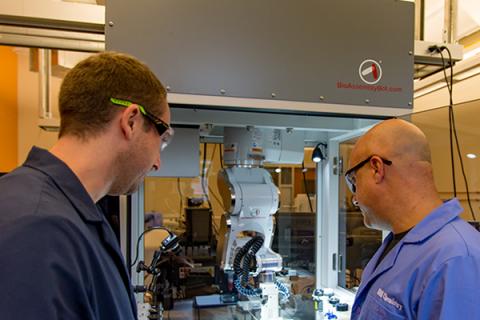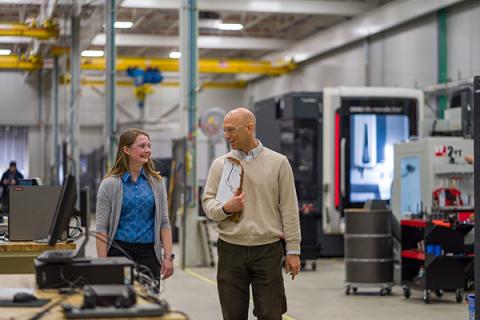
Dr. John Tsavalas with grad student Steve Frick. Image: Ali Asghar.
Dr. John Tsavalas
UNH Department of Chemistry
Dr. Harish Vashisth
UNH Department of Chemical Engineering
NH BioMade is using 3-D printing to develop microscale porous scaffolds that mimic the structure of human tissue for use in surgical procedures and wound healing. In the human body, the extracellular matrix is composed of large molecules such as collagen, enzymes, and glycoproteins. It provides structural and biochemical support to surrounding cells and has highly variable structures. Fabricated scaffolds currently available are made of homogeneous materials and fail to replicate the complex structures of natural tissue. NH BioMade is developing tissue engineering techniques to guide the self-assembly of particles toward highly ordered structures with manufacturing control of pore dimensions and surface area and with mechanical and chemical properties that are predicted and controlled across multiple length scales.
Hypothesis
Well-defined, prestructured microparticles will enable 3D printing of heterogeneous physical and porous macrostructure through simultaneous self-assembly and top-down biomaterial fabrication.
Intellectual Merit/Novelty
- Computation-integrated approach to material design, using rationally designed heterogeneous microscale building blocks
- Range of physical/mechanical properties to be successfully implemented via 3D printing
- Family of tissue engineering platforms with unprecedented versatility to mimic heterogeneous structure of human tissues



